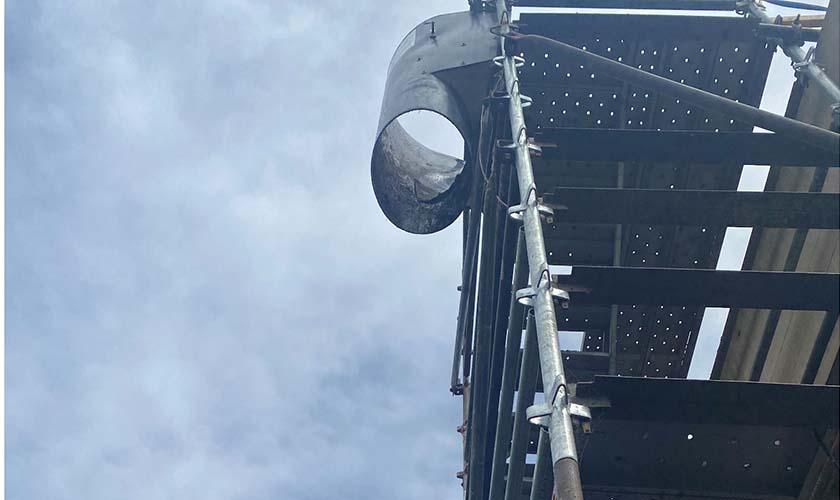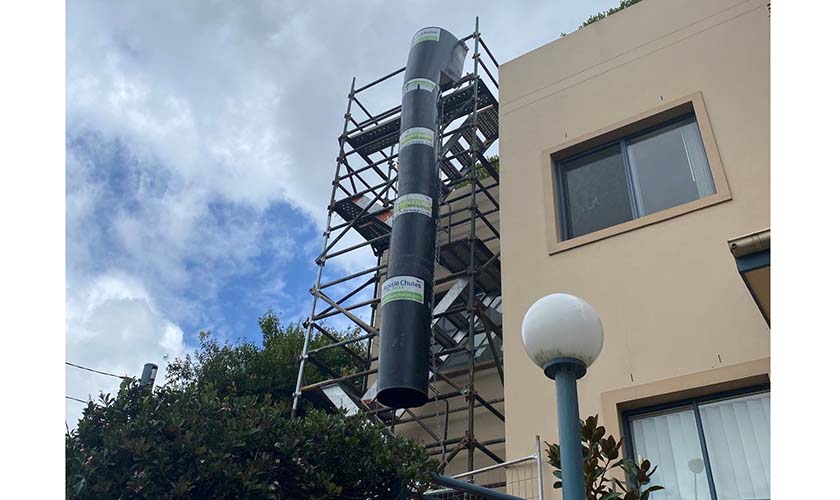Construction garbage chute collapse (17 February 2021)
A 26-year-old casual worker employed by a labour hire company sustained neck injuries when he was pinned underneath a construction garbage chute as it collapsed. The chute, designed for free-flowing material, was filled vertically with soil when it collapsed. The worker had only been on site for a week and a half.


Safety information
Implement ‘reasonably practicable’ control measures to manage the risks associated with using construction garbage chutes.
When planning to install a chute at a workplace, make sure it can be installed, used and dismantled in accordance with the designer’s requirements. Consider:
- the type and weight of materials expected to be moved
- the planned location of the chute, including local weather conditions e.g. exposure to wind
- the means of support required to support the chute and the intended materials and
- any risks that may be introduced by its installation.
Where the designer or manufacturer’s information is not sufficient to manage all associated risks, consult with the designer or manufacturer. Where this is not practical, consult with a competent person.
Installing a chute
When installing a chute on site make sure:
- the chute is installed in accordance with the designer or manufacturer’s instructions, or those of a competent person
- the chute is secured to the scaffold or other supporting structures ensuring any weight placed on the fixtures does not impact overall integrity
- no alterations or changes to design of the chute or its method of support / fastening are made without prior approval from the designer, manufacturer, or competent person
- any joins in the chute are tightly secured to help support the chute against high wind gusts and prevent breakages as large garbage passes through
- a visual inspection of the chute and its fastenings is completed before any work begins
- the chute system is isolated and not used if there is any damage or unusual performance identified, until advice has been received from a competent person on how to manage the risks.
Using the chute
When using the chute on site make sure:
- you provide clear instructions for what can, and what cannot, be placed in the chute and ensure this is communicated and understood by all workers onsite
- additional measures are put in place when using wet materials or large articles that can cause blockages and/or overloading (e.g. spotters that confirm the movement of the material/articles)
- you immediately stop using the chute system if it becomes blocked or overloaded
- any material put into the chute is not heavier than the weight rating of the chute
- guardrails are in place to protect any opening in the chute to prevent workers falling into the chute
- a perimeter is enforced around the landing spot at the bottom of the chute to prevent injuries from falling garbage or debris – consider barricades, guardrails and warning signs
- the top of the chute is covered to prevent falls when not in use.
At risk workers
If you have at risk workers, such as labour hire, CALD, migrant or young workers on your site, make sure:
- they have met the supervisor
- someone suitably skilled inducts them onto the site
- they are told about any places they should not go, and why
- someone suitably skilled shows them how to do the job and use any equipment or machinery required
- they understand any instructions provided – language and literacy barriers need to be considered
- they are supplied with any required safety equipment and know how to use it correctly
- they understand what to do in an emergency, including where any evacuation points are located and who to contact if required
- they are encouraged to raise safety concerns and understand who they should speak to about their concerns.
Download a PDF of this Incident Information Release - Construction garbage chute collapse (PDF 244kb)
More information
- Code of Practice – Construction work (PDF 1MB)
- Code of Practice - Managing the risk of falls in housing construction (PDF 2.2MB)
- Code of Practice – How to manage work health and safety risks (PDF 555kb)
- At risk workers information page
- Induction of labour hire workers for host employers guide
- SafeWork NSW translated resources hub